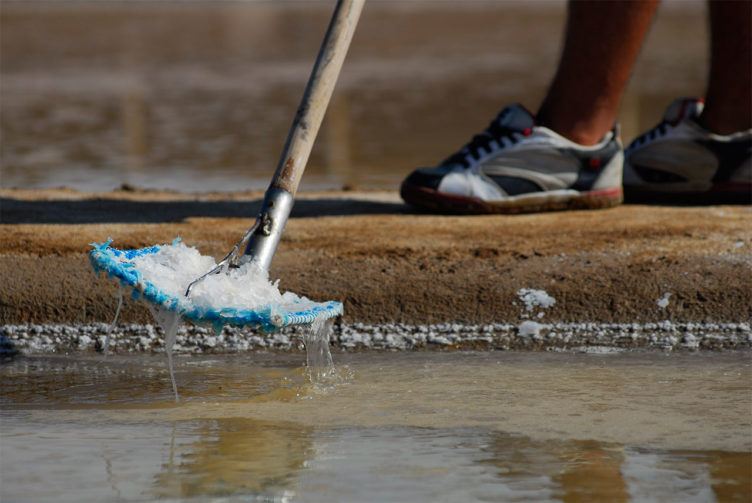Rui Simeão, one of the pioneers in salt extraction in Tavira (who started ~2 years before other producers), has been awarded a special Protected Designation of Origin (PDO) status by the European Commission. This distinction is not directly related with the salt extraction process, but the Ria Formosa mud quality and Rui Simeão’s Fleur de Sel distinguished product.

photo credits: Rui Simeão
Flor de Sal — or, literally translated Flower of Salt — is the outcome of a natural, unprocessed and chemical-free product, which is harvested in a traditional and handcrafted way. The final product is healthier and and richer in minerals and it’s also more “delicate”, as the salt looks almost like snowflakes and not the common rock salt.
The making of Fleur de Sel requires unusual care in an industry used to supply large masses. It’s a handmade process, originally developed in southwestern France, in Guérande, where in the year 945 monks of Landévennec Abbey created and recorded a productive salt system.
Under the intense midday sun, dry climate and constant wind, a thin crystal lattice is formed in the water surface concentrated in the salt pans. It’s similar to what happens when you blow a cup of hot milk: cream is formed on top. In the case of saline, a whitish translucent cover arises naturally due to the water contact with the warm air.
How to use Fleur de Sel?
Unlike common salt, the salt flower should not be used for food preparation and should not be cooked. Instead It should be used to further emphasize the flavor of food. The recommendation is that, after concluding the food preparation, you take some crystals with your hands, and spray them over the pan.
It can be used in meat, fish, vegetables, and completeness of any recipe, including sweet recipes.